#History of Shiva
Explore tagged Tumblr posts
Text


ལྷ་དབང་ཕྱུག
~ Shiva and Parvati.
Place of origin: Nepal
Date: 13th century
839 notes
·
View notes
Text

the paragraphs I'm going to write on this spread at some point when I get ahold of myself….anyway, the emotional crux of the whole issue is right here
#IT'S ABOUT CASS'S HISTORY! ALL OF IT! IT'S ABOUT HER MOMMY ISSUES AND HER PAST AND HER PRESENT AND HER FUTURE!#IT'S ABOUT SHIVA SEEING HERSELF IN CASS AND CASS SEEING HERSELF IN SHIVA#IT'S ABOUT THE FIGHT AS A METAPHOR FOR THEIR RELATIONSHIP!!! IT'S SO GOOD#the 'glance. touch. heartbeat. smile' callback to round it all off GOD TATE BROMBAL I'M IN YOUR WALLS#wednesday spoilers#cassandra cain#lady shiva#sandra wu san#dc comics#batgirl
171 notes
·
View notes
Text
In addition to my Monkey Man post from earlier, the always kind & sweet Aparna Verma (author of The Phoenix King, check it out) asked that I do a thread on Hijras, & more of the history around them, South Asia, mythology (because that's my thing), & the positive inclusion of them in Monkey Man which I brought up in my gushing review.
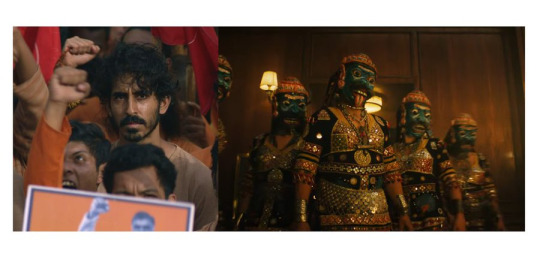
Hijra: They are the transgender, eunuch, or intersex people in India who are officially recognized as the third sex throughout most countries in the Indian subcontinent. The trans community and history in India goes back a long way as being documented and officially recognized - far back as 12th century under the Delhi Sultanate in government records, and further back in our stories in Hinduism. The word itself is a Hindi word that's been roughly translated into English as "eunuch" commonly but it's not exactly accurate.
Hijras have been considered the third sex back in our ancient stories, and by 2014 got official recognition to identify as the third gender (neither male or female) legally. Pakistan, Nepal, Bangladesh, and India have accepted: eunuch, trans, intersex people & granted them the proper identification options on passports and other government official documents.
But let's get into some of the history surrounding the Hijra community (which for the longest time has been nomadic, and a part of India's long, rich, and sometimes, sadly, troubled history of nomadic tribes/people who have suffered a lot over the ages. Hijras and intersex people are mentioned as far back as in the Kama Sutra, as well as in the early writings of Manu Smriti in the 1st century CE (Common Era), specifically said that a third sex can exist if possessing equal male and female seed.
This concept of balancing male/female energies, seed, and halves is seen in two places in South Asian mythos/culture and connected to the Hijra history.
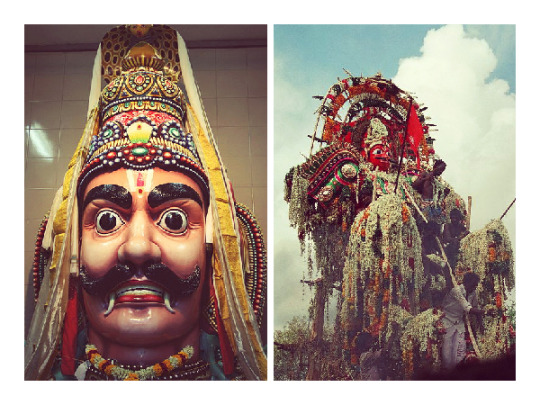
First, we have Aravan/Iravan (romanized) - who is also the patron deity of the transgender community. He is most commonly seen as a minor/village deity and is depicted in the Indian epic Mahabharata. Aravan is portrayed as having a heroic in the story and his self-sacrifice to the goddess Kali earns him a boon.
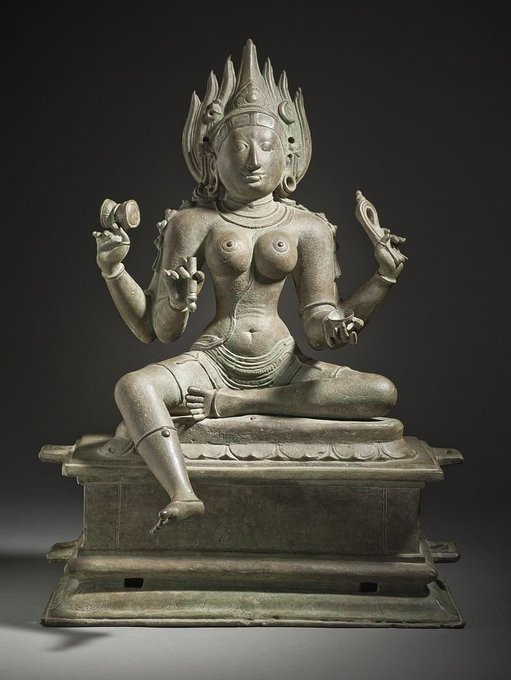
He requests to be married before his death. But because he is doomed to die so shortly after marriage, no one wants to marry him.
No one except Krishna, who adopts his female form Mohini (one of the legendary temptresses in mythology I've written about before) and marries him. It is through this union of male, and male presenting as female in the female form of Mohini that the seed of the Hijras is said to begun, and why the transgender community often worships Aravan and, another name for the community is Aravani - of/from Aravan.
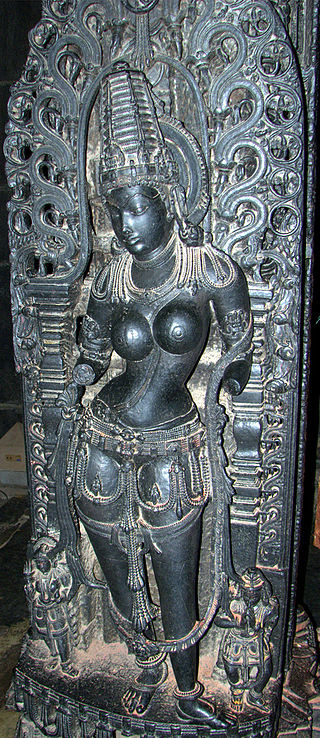
But that's not the only place where a gender non conforming divine representation can be seen. Ardhanarishvara is the half female form of lord Shiva, the destroyer god.
Shiva combines with his consort Parvarti and creates a form that represents the balancing/union between male/female energies and physically as a perfectly split down the middle half-male half-female being. This duality in nature has long been part of South Asian culture, spiritual and philosophical beliefs, and it must be noted the sexuality/gender has often been displayed as fluid in South Asian epics and the stories. It's nothing new.

Many celestial or cosmic level beings have expressed this, and defied modern western limiting beliefs on the ideas of these themes/possibilities/forms of existence.
Ardhanarishvara signifies "totality that lies beyond duality", "bi-unity of male and female in God" and "the bisexuality and therefore the non-duality" of the Supreme Being.
Back to the Hijra community.
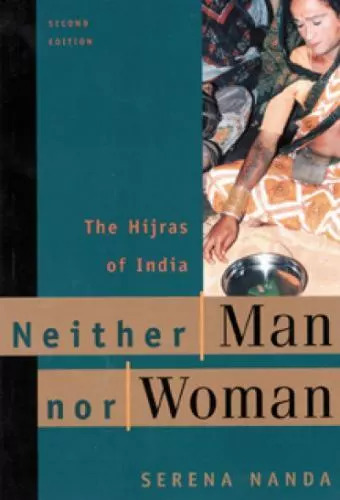
They have a complex and long history. Throughout time, and as commented on in the movie, Monkey Man, the Hijra community has faced ostracization, but also been incorporated into mainstream society there. During the time of the Dehli Sultanate and then later the Mughal Empire, Hijras actually served in the military and as military commanders in some records, they were also servants for wealthy households, manual laborers, political guardians, and it was seen as wise to put women under the protection of Hijras -- they often specifically served as the bodyguards and overseers of harems. A princess might be appointed a Hijra warrior to guard her.
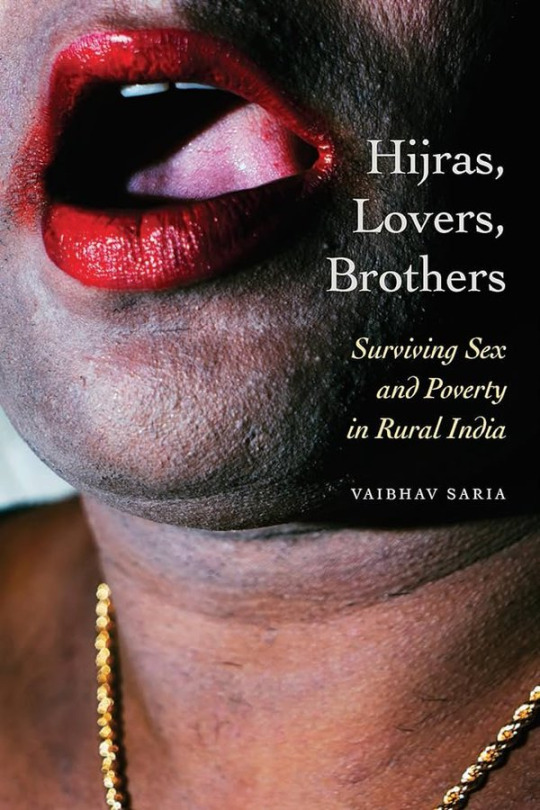
But by the time of British colonialism, anti-Hijra laws began to come in place folded into laws against the many nomadic tribes of India (also shown in part in Monkey Man with Kid (portrayed by Dev Patel) and his family, who are possibly
one of those nomadic tribes that participated in early theater - sadly by caste often treated horribly and relegated to only the performing arts to make money (this is a guess based on the village play they were performing as no other details were given about his family).
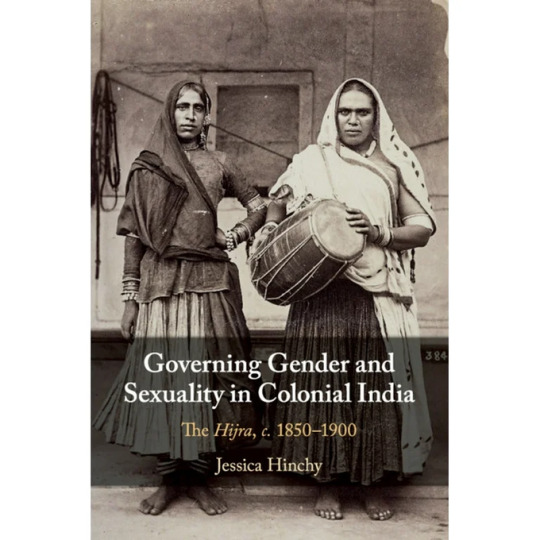
Hijras were criminalized in 1861 by the Indian Penal Code enforced by the British and were labeled specifically as "The Hijra Problem" -- leading to an anti-Hijra campaign across the subcontinent with following laws being enacted: punishing the practices of the Hijra community, and outlawing castration (something many Hijra did to themselves). Though, it should be noted many of the laws were rarely enforced by local Indian officials/officers. But, the British made a point to further the laws against them by later adding the Criminal Tribes Act in 1871, which targeted the Hijra community along with the other nomadic Indian tribes - it subjected them to registration, tracking/monitoring, stripping them of children, and their ability to sequester themselves in their nomadic lifestyle away from the British Colonial Rule.
Today, things have changed and Hijras are being seen once again in a more positive light (though not always and this is something Monkey Man balances by what's happened to the community in a few scenes, and the heroic return/scene with Dev and his warriors). All-hijra communities exist and sort of mirror the western concept of "found families" where they are safe haven/welcoming place trans folks and those identifying as intersex.
These communities also have their own secret language known as Hijra Farsi, which is loosely based on Hindi, but consists of a unique vocabulary of at least 1,000 words.
As noted above, in 2014, the trans community received more legal rights.
Specifically: In April 2014, Justice K. S. Radhakrishnan declared transgender to be the third gender in Indian law in National Legal Services Authority v. Union of India.
Hijras, Eunuchs, apart from binary gender, be treated as "third gender" for the purpose of safeguarding their rights under Part III of our Constitution and the laws made by the Parliament and the State Legislature. Transgender persons' right to decide their self-identified gender is also upheld and the Centre and State Governments are directed to grant legal recognition of their gender identity such as male, female or as third gender.
I've included some screenshots of (some, not all, and certainly not the only/definitive reads) books people can check out about SOME of the history. Not all again. This goes back ages and even our celestial beings/creatures have/do display gender non conforming ways.
There are also films that touch on Hijra history and life. But in regards to Monkey Man, which is what started this thread particularly and being asked to comment - it is a film that positively portrayed India's third sex and normalized it in its depiction. Kid the protagonist encounters a found family of Hijras at one point in the story (no spoilers for plot) and his interactions/acceptance, living with them is just normal. There's no explaining, justifying, anything to/for the audience. It simply is. And, it's a beautiful arc of the story of Kid finding himself in their care/company.
#hijra#trans representation#monkey man#dev patel#transgender#trans rights#trans rights are human rights#third sex#indian history#indian culture#colonialism#imperialism#south Asian mythos#South Asian myths#Aravan#Iravan#Mahabharata#hindu mythology#hindu gods#kali goddess#krishna#hindu mythology art#Ardhanarishvara#Shiva#Parvarti#sexuality#gender fluid#fluid sexuality#trans community#transgender rights
833 notes
·
View notes
Text
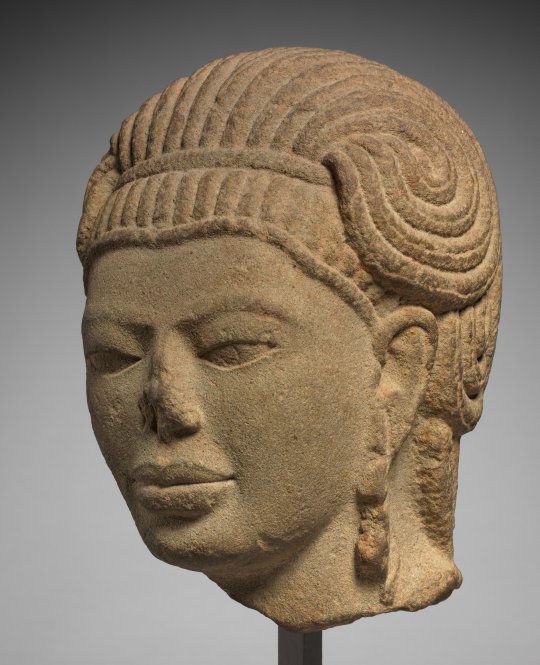
Head of Male Deity, possibly Aiyanar, Central Thailand, Phetchabun province, possibly Si Thep, 600–650. Cleveland Museum of Art (ID: 1970.11). The dreadlocks suggest that this figure is related to the Hindu god Shiva, and the sensitive rendering of the facial features indicates that it was carved during the early phase of stone sculpture production in Thailand. A more complete sculpture of another male figure with dreadlocks and youthful features is known from Thailand and shows him seated with one knee up, supported by a yoga strap. In South India, a deity of this description is worshiped as a guardian on the outskirts of villages on the banks of ponds and reservoirs, known as Aiyanar, which means "Lord" in the Tamil language. Alternatively, this figure could be an ascetic, or follower of Shiva. (Cleveland Museum of Art).
#thai#thailand#tamil#thai history#thai art#hindu#shiva#hinduism#hindu art#sculpture#middle ages#medieval history#medieval art#medieval#aiyanar#si thep
92 notes
·
View notes
Text
Ya ever find it weird that Bahamut barely has his role talked about in game? How strange his role really is?
Bahamut, the bladekeeper
Bahamut, the draconian
Bahamut, the keeper of prophecies and creator of the crystal
Bahamut, the god of war
Bahamut, the god who never provided a real reason for why so much blood had to be spilled for his prophecy to come true
Bahamut, who misled Ardyn and Somnus both into petty violence
Bahamut, who told Ardyn to spread the scourge upon the world for decades
Bahamut, who let Ardyn go on a vengeful killing spree just long enough to really hate Lucis- but not get his revenge- and then let him go back on his merry way to Nifilheim and Verstael Besithia who had ambitions of war and tin soldiers powered by scourge
Bahamut, who enabled a war that killed nearly everyone on both sides not to mention those who were caught in the crossfire- a war that would not have been so bloody had Ardyn not had such a hand in it
Bahamut, who demanded a blood price 2,000 years in the making- who really demanded two sacrifices- Ardyn and Noctis- who did not need both for there is a world where Noctis at least lives and the sun rises and no one else needed to die for it.
Bahamut, the god of war, the creator of the crystal
It’s a strange pairing when taken with the story of ff15. That’s all.
#if I were a war god I sure as shit would have ulterior motives while writing prophecies#like I’m just saying it’s weird right#that Bahamut of all people is the one dishing out prophetic visions#that Bahamut is the one with both hands in the bloody bloody tragedy#despite the fact that literally any of the other gods could have been the figurehead#or they could have made it a group project#but it very clearly appears to be Bahamut’s work that the other gods just need to sign off on#which like- again that’s weird right#there’s no reason for the war god to have prophetic powers#there’s no real reason for Bahamut specifically to even be part of the game#he doesn’t even- far as I know- have a history of being prophetic#his history in the series is largely defined by being big and scary and smiting with megaflare#why not swap his and Ifrit’s places in the narrative?#after all Ifrit has better reasons to be messing around with kingdoms and prophecies#and Bahamut has better reasons to be driven mad with scourge#or go one step further in the tomfoolery#and have Shiva Bahamut and Ifrit trade roles (in that order)#my point here is that I stopped and thought about the prophecy and stopped taking it as the word of god truth#and it gets really weird really fast when you realize that the consequences of the prophecy are awful convenient for a war god#*insert that image of the guy with his conspiracy board*#nyx rambles#ffxv#ff15#final fantasy 15#final fantasy xv#bahamut#ffxv bahamut
64 notes
·
View notes
Text
Wayne Family Adventures says "What if we actually addressed the scar that killing Shiva would leave on Cass's psyche that we never got to dive into in canon due to her randomly getting brainwashed into being a racist stereotype in the immediate aftermath of that kill? And what if we tied it into her Orphan identity showcasing how it's a form of self punishment for her parents actions? And what if we acknowledge that Cass is willing to sacrifice every part of herself for the sake of others on an extreme level due to years of dehumanisation combined with suicidal tendencies?"
And I respond by clapping my hands with glee that we've got essentially a weekly Batgirls comic along with Cass's actual monthly Batgirl run. One that will force fluffy fanon fans to actually learn about her character and not AO3 Cass!
#dc#cassandra cain#dc rambles#I don't love their Shiva characterisation but it's accurate to Cass's batgirl book and their history#I just prefer it when Shiva is written as her own neutral person as opposed to Cass's evil mom u know#But man it's so fucking funny to be so hype for weekly wfa releases but they're doing a better ensemble story than main comics#Mostly because the bar is on the floor. Main ensemble comics are either trying and failing to be wfa or terribly written melodrama#WFA knows what it's about which is more than I can say for current batman and tec
81 notes
·
View notes
Text

Ardhanarishvara
Ardhanarishvara is a form of the Hindu deity Shiva combined with his consort Parvati. Ardhanarishvara is depicted as half-male and half-female.
Ardhanarishvara means the "Lord whose half is a woman." This form symbolizes the unity and balance of masculine and feminine energies in the universe.
Ardhanareeshvara symbolizes male and female principles cannot be separated. It conveys the unity of both energies as one, this union represents the balance of masculine and feminine energies within the universe and the importance of harmony and unity.
Ardhanarishvara is a symbol of the union of the masculine and feminine aspects of the divine.
#ardhanarishvara#consciousness#light#magic#energy#ascension#godhood#divine feminine#alchemy#divine masculine#ancient#archaeology#hinduism#rebis#esoteric#occult#age of aquarius#golden age#enlightenment#kundalini#kundalini awakening#wisdom#ancient history#india#aliens and ufos#shiva#parvati
59 notes
·
View notes
Text
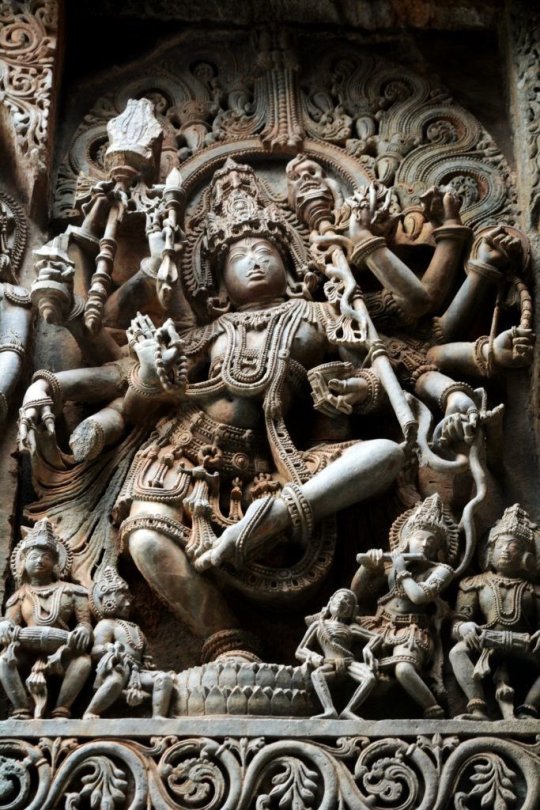
Naṭarāja- The divine cosmic dancer
Hoysala architecture, 12th century
45 notes
·
View notes
Text

#hindublr#desiblr#india#indian history#navaratri#durga#shiva#indus valley civilization#ancient history
81 notes
·
View notes
Text
sometimes i wonder if Lady Shiva was made back when white people still thought Shiva (the hindu god) was a girl. like i know she's an older character (1975) but I have no clue when foreigners started to get accurate information about brown cultures.
theres a whole bunch of old English newspaper articles talking about "the cult of the goddess Shiva". they mixed this man up with his wife. not that he would mind (its a compliment) but like. yall. they have different iconography??? they also have pretty visibly different bodies in all art that isn't of Ardhanarishvara
Anyway my theory is that a writer at DC wanted to make an exotic character and thought "hey! India has this goddess of destruction with a conveniently short and pronouncable name right here! this is perfect for an assasin!" and then fucked up because old timey anthropologists were bad at their jobs and named her Shiva instead of Kali
#still a cool name#not traditionally a girls name tho#you could always headcannon that shes trans and stuck with her birth name cuz its cool as hell#they got it mostly right so points for that i guess#lady shiva#dc#dc comics#history#hindu mythology#hinduism
30 notes
·
View notes
Text
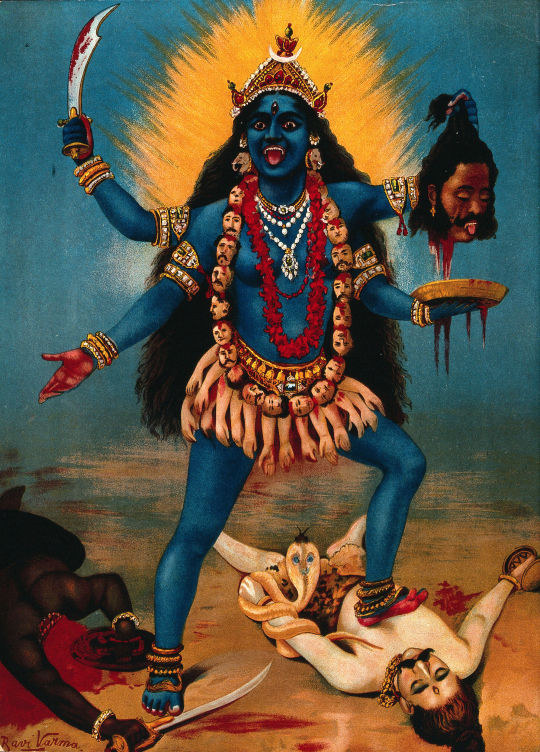
Kali trampling Shiva. Chromolithograph.
Ravi Varma, 1848-1906.
#shiva#kali#varma#indian#art#chromolithograph#color#paint#painter#artist#history#story#original#fusion#sensibility#iconography
24 notes
·
View notes
Text




The sanctuary of Elephanta, Decan, 6th century
This shrine dates from the VIth century, built on a small island in Mumbai Bay. It is one of the most beautiful examples of Indian rock sculpture with a peak of decorations and expressiveness.
The iconographic program is damaged, but remains complete and is a true mythological synthesis of the god Shiva featured in several myths
It is a cruciform sanctuary which opens on 3 ends decorated with porches with panels and is built around a north south and east west axis with two different and complementary centers of attraction:
- a cella which houses the pure form of Shiva: the linga
- at the very back of the wall a colossal head of the god Shiva with 3 Shivas, called maheshamurti, that is to say “the form of the great god”
This second center which stands out in the darkness : a colossal triple head of Shiva, 5 meters high. The central face has its eyes closed and gives an impression of contemplation, of meditation, it is marked by a fullness, a completeness which can be read thanks to the simplification of the volumes, the symmetry of the features
It represents the immutable balance of the god in meditation
The face on the right is a male face with a mustache: it is the terrible appearance facing a trained cobra, representing the violent, destructive aspect of the god. He wears an ascetic bun with a skull, symbolizing death, the god of asceticism, of yoga, who retires to the Himalayas
The face on the left is feminine, much more rounded, softer, facing a flower with a refined hairstyle and jewelry that recalls elegance.
This triple head which is placed at the same level as the linga. This symbolizes the two great opposite and complementary centers
- The linga : a transcendent god outside the of the world, beyond everything
- The Maheshamurti : a god acting in the world, who manifests himself, who develops in the world and is the world
We therefore have here a double cultual center with an iconic center, representing the god who acts in the world and an emotional center with the linga at the heart of the rituals.
This complementarity in the two centers symbolizes all aspects of the complex figure of Shiva who is an ambivalent god, both ascetic who withdraws from the world, but equally erotic, whose role is to conceive, who is active in the world to act against the demons
He is a destructive and savior god who resolves the tensions of opposites and proposes an overcoming of these forms of duality.
10 notes
·
View notes
Text
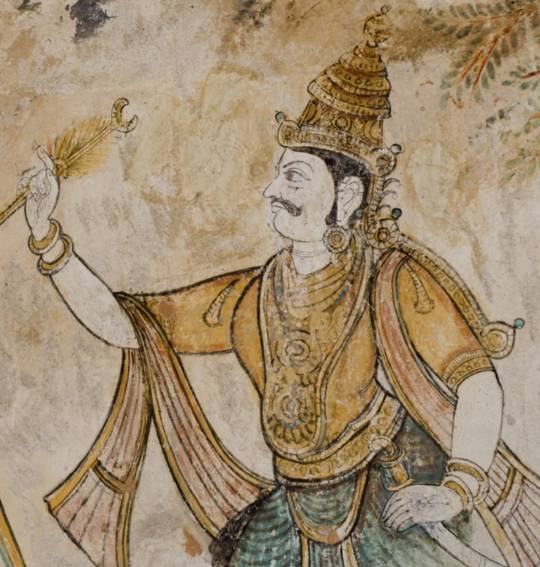
A mural of the Chola Emperor Rajaraja I (r. 985-1014) at Brihadisvara Temple, Thanjavur, Tamil Nadu, India. Rajaraja I (947–1014), also known as Rajaraja the Great, was a powerful Chola emperor who ruled from 985 to 1014. Renowned for his military conquests, he expanded the Chola Empire across southern India, northern Sri Lanka, and key islands in the Indian Ocean, and fought significant battles against rivals like the Western Chalukyas and the Telugu Chola king Jata Choda Bhima. He commissioned the grand Rajarajeshwaram Temple in Thanjavur and oversaw the compilation of Tamil devotional works into the Thirumurai, earning him the title "Thirumurai Kanda Cholar." He also initiated a major land survey in 1000, reorganizing the region into administrative units called valanadus. Rajaraja was succeeded by his son, Rajendra Chola I.
#india#indian art#indian history#shaivism#hindu#hindu art#hindu history#shiva#medieval art#medieval history#sri lanka#chola#hindu temple#asia#asian art#asian history
23 notes
·
View notes
Text
instagram
Episode 196: The Disappearance of Jacobo Grinberg *IS LIVE*! Image 01: Jacobo Grinberg was a famed Mexican scientist, neurophysiologist, and psychologist who dedicated his life to studying an unseen reality or “Lattice” which existed at the intersection of psychic ability and shamanism. Image 02: Jacobo in the lab. Image 03: One of Jacobo’s experiments tested psychic ability by instructing children to meditate, after which he would blindfold the child and ask them to describe picture books without use of their eyes. Image 03: The experiments led Jacobo to publish his “sintergic theory” about the existence of an unseen reality, or “lattice”, we can tap into with meditation. Image 04: Jacobo theorized that Mexican Shamans were able to tap into the lattice and began observing a Mexican healer known as “La Pachita.” Image 05-08: La Pachita was famous for performing psychic surgeries using only a few bandages and a rusty kitchen knife. During these surgeries, Pachita would connect with a spirit she called “Hermanito” who had been a powerful Aztec ruler known as Cuauhtémoc. Image 09: As Jacobo’s controversial research began revealing things he was “unable to explain with modern science”, Jacobo found himself at the center of political upheaval and was ostracized from the scientific community... until he went missing altogether. Some people believe Jacobo actually transformed into someone else entirely named Shiva Shambo. Image 10: Shiva Shambo. What do you guys think? Where did Jacobo go? Is Shiva Shambo and Jacobo the same person?!
#the disappearance of jacobo grinberg#jacobo grinberg#mexico#pachita#shiva shambo#mexican history#shamanism#psychic ability#neuroscience#psychology#neurophysiology#mysterious disappearances#instagram#photo dump#Instagram#let's get haunted
11 notes
·
View notes
Text


"The Lord of Animals", Pashupati Seal, from the city of Mohenjo Daro, Indus Valley Civilisation
vs
Hyrule's Horse God Malanya
#legend of zelda#zelda#breath of the wild#malanya#horse god#indus valley#mohenjo daro#shiva#hyrule#lord of animals#hinduism#archaeology#history of religion#mythology
21 notes
·
View notes
Text
youtube
Hello again!
Today we discuss the ever changing characterization of Lady Siva!
Also with thanks to our editor, enigma2meagain, if you're looking to hire them, please follow the link! https://www.tumblr.com/enigma2meagain
My Patreon and Ko-Fi can be found here, every little bit helps! https://www.patreon.com/ShakeTailStudios
https://ko-fi.com/shakytailstudos
Reference Material:
https://www.tumblr.com/tumblingxelian... https://www.tumblr.com/judgeanon/7075... https://www.tumblr.com/judgeanon/7063... https://but-a-humble-goon.tumblr.com/... https://judgeanon.tumblr.com/post/690... https://judgeanon.tumblr.com/post/670... https://judgeanon.tumblr.com/post/674... https://autisticcassandracain.tumblr.... https://judgeanon.tumblr.com/post/668... https://www.tumblr.com/tumblingxelian...
20 notes
·
View notes